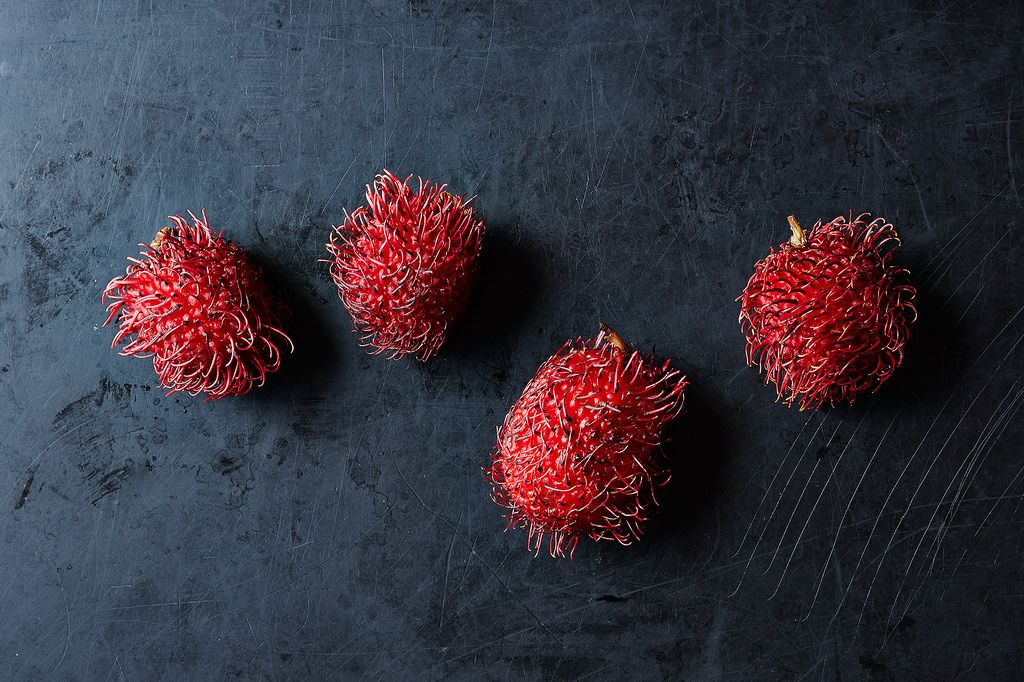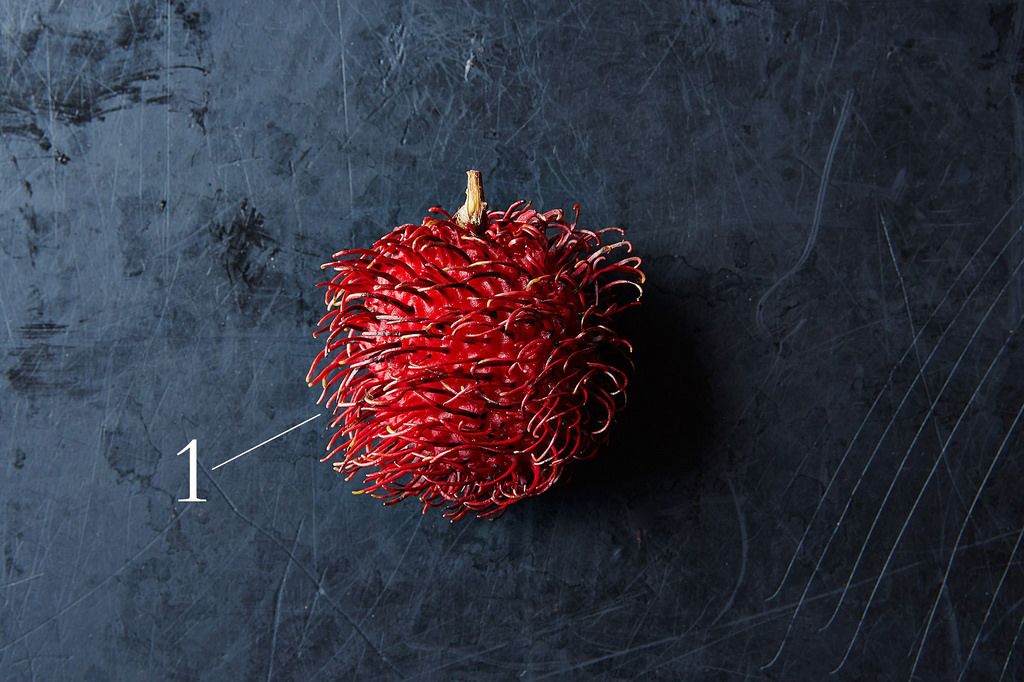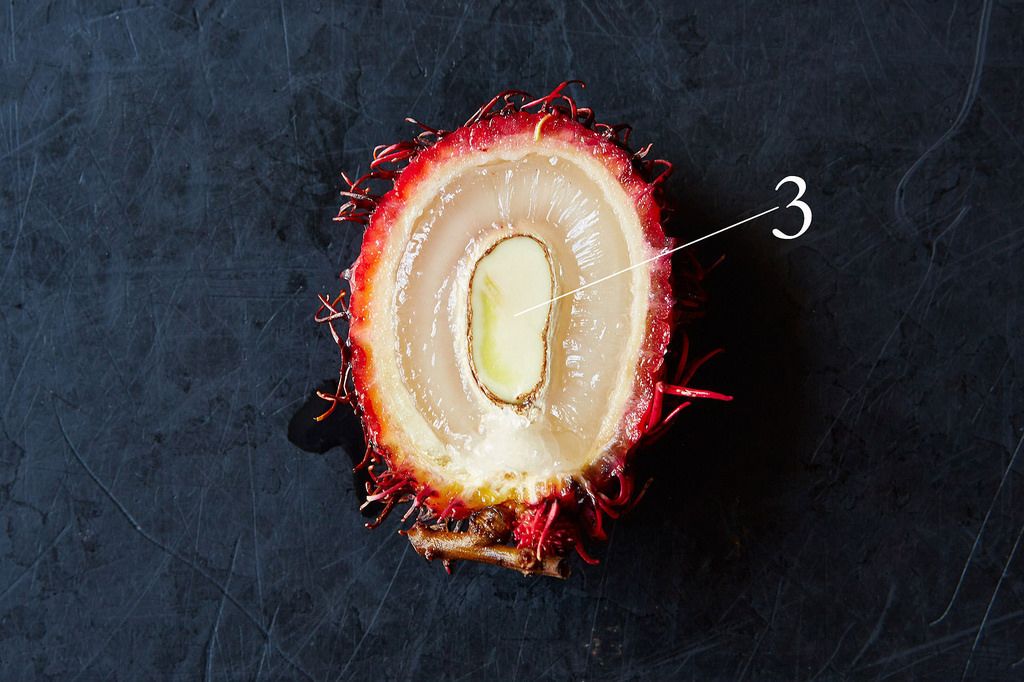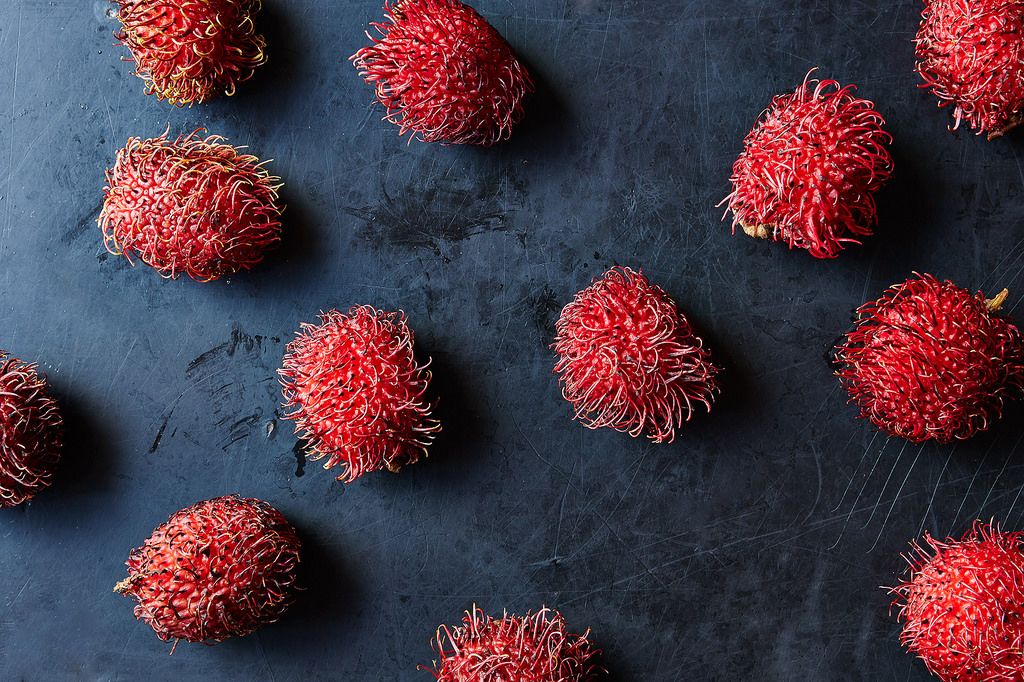Every week we get Down & Dirty, in which we break down our favorite unique seasonal fruits, vegetables, and more.
Today: Not to worry! Getting into this spiky tropical fruit doesn't have to be a hair-raising experience.

If you’re dressing up for Halloween at some point this week (and you are, right?), surely you’ll approve of a fruit sporting great outerwear, and rambutans have some of the best.
We’ll admit that spreading out a pile of rambutans across a countertop does look a little -- okay a lot -- like sea urchins blanketing an ocean floor. But their spiny exterior isn’t anything to be afraid of (unless you’re creeped out by their Muppet doppelgänger); this fruit's intimidating-looking spikes (1, below) aren't sharp. They're soft, more like hair than thorns. In fact, the name rambutan comes from the Malay word rambut, meaning hair. We might be partial to the Vietnamese name though: Chôm chôm (sounds like chohm chohm) is just plain fun to say.

Rambutans grow in clusters on trees, and these tropical fruits need to be picked when they’re fully ripe -- they won’t continue to ripen after they’re picked. You'll most often see rambutans with a deep red exterior, but there are also varieties that sport yellow-colored rinds.
To find rambutans, head to a specialty grocery store. Our friends at Frieda’s recommend choosing brightly colored fruits that are free from signs of leaking. Store them in a plastic bag in the refrigerator -- they’ll last for up to two weeks.


Getting into a rambutan is a little like a choose-your-own-adventure novel. Since the spikes are soft, you can just grab the skin and peel it like you would an orange. You can also take a paring knife, make a shallow cut around the fruit (2), and then separate. Food52er seabirdskitchen grabs the fruit at each end and twists in opposite directions to pop the skin open and release the fruit.
Just like stone fruits, rambutans can come in freestone and clingstone varieties. Both are equally tasty -- with clingstone varieties, you'll just have to work harder to separate the flesh from the seed (3).

For a Halloween-worthy drink adornment, leave the rambutan unpeeled and pop it onto a cocktail skewer or a toothpick. Or, peel them and turn them into tasty "eyeballs": Make a small slit and pry out the seed, then stuff the rambutan with a small grape or maraschino cherry and drop it in your drink.
Of course, rambutans aren’t just for Halloween. They're a perfect fruit for enjoying out of hand or adding to a tropical fruit salad in chunks. Rambutans are closely related to lychees, and you can substitute one for the other in recipes -- like in this refreshing sorbet.
Tell us: How do you like to use rambutans and what was your favorite Halloween costume of all time?
Photos by Mark Weinberg






See what other Food52 readers are saying.